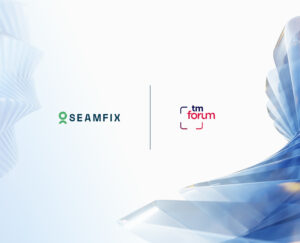Imagine running a ship. You’ve got a crew of talented people, each with their own roles and responsibilities. But what happens when someone new joins the crew? Or when someone leaves? Or when their role changes? If you don’t manage these transitions smoothly, things can get chaotic pretty quickly. That’s where User Lifecycle Management (ULM) comes in. Basically, it’s the process of managing user identities and access from the moment they join your organization to the moment they leave—and everything in between.
In this blog, we’ll break down what User Lifecycle Management is, why it’s so important, and how solutions like Seamfix iAM can make the process seamless and stress-free. Whether you’re an IT professional, a business owner, or just someone who’s curious about how organizations stay organized, this one’s for you.
What is User Lifecycle Management?
Let’s start with the basics. User Lifecycle Management (ULM) is the process of managing user identities and access throughout their time in an organization. It covers everything from onboarding new users to updating their access as their roles change, and finally, offboarding them when they leave.
Think of it as the HR department for your digital systems. Just like HR manages employees’ physical presence in the workplace, ULM manages their digital presence—ensuring they have the right access to the right tools at the right time. Therefore, implementing a strong ULM system is essential for maintaining order and security in any organization.
Why User Lifecycle Management Matters
So, why should you care about ULM? Here are a few reasons:
- Security: Without proper ULM, former employees might still have access to sensitive systems, creating a security risk.
- Efficiency: Automating user provisioning and deprovisioning saves time and reduces errors.
- Compliance: Many industries have regulations that require strict control over user access. ULM helps you stay compliant.
- User Experience: When employees have the right access from day one, they can hit the ground running and stay productive.
In addition, ULM ensures that organizations stay agile and responsive to changes, preventing potential security loopholes or operational inefficiencies.
The Stages of User Lifecycle Management
ULM can be broken down into five key stages:
- Onboarding This is where it all begins. When a new user joins your organization, they need access to the tools and systems required for their role. ULM automates this process, ensuring that new users are set up quickly and securely. Otherwise, manual processes can lead to delays and errors.
- Role Changes As users move within the organization—whether it’s a promotion, a transfer, or a change in responsibilities—their access needs may change. ULM ensures that their access is updated accordingly, without any unnecessary delays. All in all, this keeps workflows smooth and secure.
- Access Reviews Regularly reviewing user access is crucial for maintaining security and compliance. ULM simplifies this process by providing tools for auditing and managing access rights. For the purpose of ensuring compliance, organizations can easily track who has access to what.
- Suspensions Sometimes, users may need to be temporarily suspended—for example, during a leave of absence. ULM ensures that their access is paused without being completely revoked. Otherwise, inactive accounts could pose a security threat.
- Offboarding When a user leaves the organization, their access needs to be revoked promptly to prevent security risks. ULM automates this process, ensuring that all access is removed and accounts are deactivated. In conclusion, proper offboarding reduces the chances of unauthorized access.
Real-World Use Cases for User Lifecycle Management
Still not convinced? Here are some real-world examples of how ULM can make a difference:
- Streamlining Onboarding Imagine a new employee joining your organization. With ULM, they can be set up with access to email, HR systems, and other tools on their first day—without any manual intervention. In addition, this improves their onboarding experience and productivity.
- Managing Role Changes When an employee is promoted or transferred, ULM ensures that their access is updated to reflect their new role. This eliminates the risk of them retaining unnecessary access. Otherwise, organizations might face compliance and security issues.
- Ensuring Compliance Regular access reviews are a key part of many compliance regulations. ULM simplifies this process by providing tools for auditing and managing access rights. Therefore, businesses can avoid regulatory fines and security breaches.
- Preventing Security Breaches When an employee leaves the organization, ULM ensures that their access is revoked promptly, reducing the risk of security breaches. All in all, this proactive approach strengthens the organization’s security posture.
How Seamfix iAM Simplifies User Lifecycle Management
Now, let’s talk about how Seamfix iAM can help. Seamfix iAM is a modern IAM solution that includes robust User Lifecycle Management capabilities. Here’s why it’s a great choice for your organization:
- Automation: Seamfix iAM automates the entire user lifecycle, from onboarding to offboarding, saving time and reducing errors.
- Flexibility: Whether you’re managing a small team or a large enterprise, Seamfix iAM can scale to meet your needs.
- Security: With features like Multi-Factor Authentication (MFA) and encryption, Seamfix iAM ensures that your data stays secure throughout the user lifecycle.
- User-Friendly: Seamfix iAM is designed with the end-user in mind, making it easy for employees to navigate and adopt.
For example, imagine a new employee joining your organization. With Seamfix iAM, they can be set up with access to all the tools they need on their first day—without any manual intervention. And when they leave, their access can be revoked just as easily. Therefore, it’s ULM made simple.
Tips for Implementing User Lifecycle Management
Here are some tips to help you get the most out of ULM:
- Start with a Plan: Identify your organization’s specific needs and goals for ULM.
- Involve Key Stakeholders: Get input from IT, HR, and other relevant teams to ensure everyone’s needs are met.
- Communicate with Users: Let employees know why ULM is being implemented and how it will benefit them.
- Monitor and Optimize: Keep an eye on how the system is performing and make adjustments as needed.
Final Thoughts
User Lifecycle Management is the secret to smooth sailing in your organization. By managing user identities and access throughout their lifecycle, you can enhance security, improve efficiency, and ensure compliance. In conclusion, a well-implemented ULM strategy is essential for any organization looking to stay secure and compliant.
And with solutions like Seamfix iAM, implementing ULM has never been easier. It’s designed to make the process seamless, scalable, and user-friendly—so you can focus on what really matters: running your business.
So, what are you waiting for? Take the first step toward better User Lifecycle Management by exploring how Seamfix iAM can help.
Ready to learn more? Check out Seamfix iAM and its User Lifecycle Management capabilities here.






